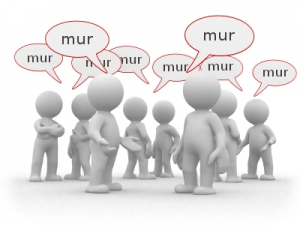 Everyone knows that Halloween is a time of spooks, monsters, and witches. What has been lost in the costumed time of begging for candy is the religious foundation of the festival. Some Christians, including Latter-day Saints, have a hard time with this season as they consider it a celebration of evil. There is truth to that, but only because of cultural transformation. It actually has a Christian devotional relationship.
Everyone knows that Halloween is a time of spooks, monsters, and witches. What has been lost in the costumed time of begging for candy is the religious foundation of the festival. Some Christians, including Latter-day Saints, have a hard time with this season as they consider it a celebration of evil. There is truth to that, but only because of cultural transformation. It actually has a Christian devotional relationship.
From a William Hamblin and Daniel Peterson article about the holliday roots:
The word “Halloween,” or “Hallowe’en,” dates to about 1745. It’s a contraction of “All Hallows’ Eve,” and it denotes the evening before the Western Christian feast of All Hallows’ Day (i.e., “All Saints’ Day”) — a time, in the Catholic calendar, for remembering the dead, particularly saints, martyrs, and departed Christian believers. (It’s akin to the Jewish “Yizkor” prayer and the Hindu period of “Pitru Paksha.”) . . .
All Saints’ Day became a Christian holiday in A.D. 609, but it was originally celebrated on May 13. By the end of the 12th century, all of Europe observed it. Churches rang their bells, and criers dressed in black paraded in the streets, summoning others to pray for the deliverance of the souls in Purgatory. (Act 2, Scene 1 of Shakespeare’s “Two Gentlemen of Verona” recalls the sound of “a beggar at Hallowmas.”) Skulls and skeletons were commonly depicted as reminders of death and the transience of human life. “Soul cakes” were baked and distributed in memory of all christened but departed souls, which suggests one possible origin for the treats given out at Halloween.
In 835, though, Pope Gregory IV changed the date of All Saints or All Hallows to Nov. 1. Some readers will be familiar, in this connection, with the common Hispanic observance of the “Dia de Muertos” or “Day of the Dead.” . . .
Curiously, Martin Luther is said to have nailed his famous “95 Theses” to the door of All Saints’ Church in Wittenberg — and, thus, to have launched the Protestant Reformation — on Oct. 31 because he knew that the church would be packed with worshippers on All Hallows’ (or All Saints’) Day the following morning. Hence, Oct. 31 is also celebrated as “Reformation Day.”
In honor of the religious aspects of Halloween, I present Scripture stories that would fit in with the season. They can frighten and enlighten. Perhaps these can be a step in inviting back the spiritual aspect of the holiday. Another option is spending time contemplating the struggles and triumphs of family history before dressing up and celebrating. Continue reading


